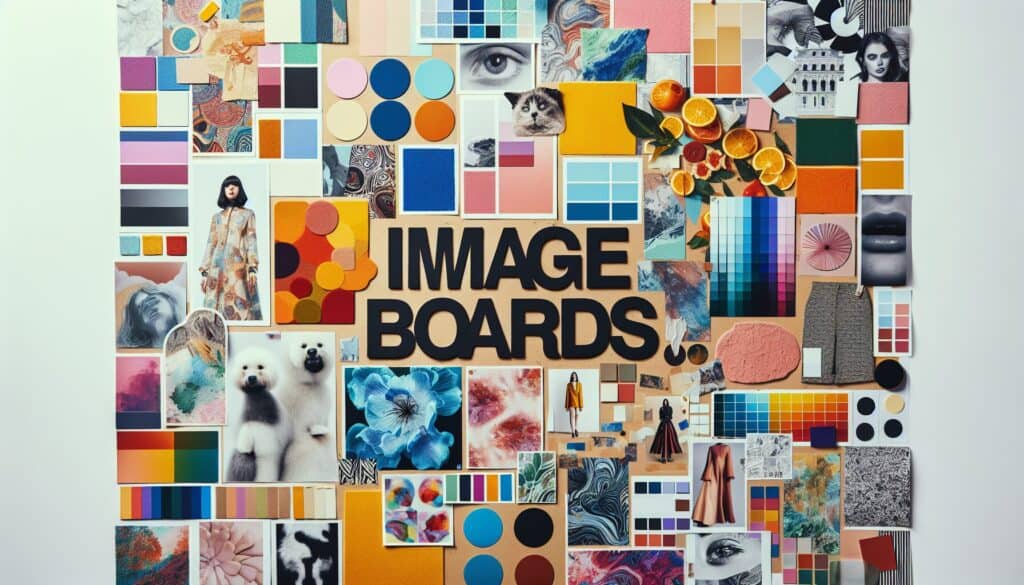以视觉方式探索和传达创意项目或产品所需的美学、风格、情感基调和总体方向。
- 方法: 工程, 质量
形象板(心情板)

形象板(心情板)
- 品牌战略, 创意设计策略, 设计思维, Human-Centered Design, 构思, 原型设计, 用户体验(UX), 用户界面(UI), 视觉设计
目标
如何使用
- 由图像、纹理、色彩、排版和其他视觉元素拼贴而成,共同代表了预期的外观和感觉。在设计团队内部以及与利益相关者之间,它是一种启发和沟通工具。
优点
- 促进创意探索和构思,帮助尽早建立清晰的视觉形象,加强沟通和美学目标的一致性,并能激发新的设计方向。
缺点
- 如果没有很好地整理或解释,可能会被误解;如果板块限制过多,可能会导致过度衍生的设计;创建可能很耗时;效果取决于所选视觉效果的质量和相关性。
类别
- 客户与营销, 构思, 产品设计
最适合:
- 在设计项目(平面设计、室内设计、时装、产品设计、品牌设计)的早期阶段,确定并传达视觉和情感方向。
Image boards, commonly known as mood boards, play a significant role in bridging the gap between abstract concepts and tangible design in various industries. They are frequently employed during the ideation phase of projects in sectors such as graphic design, interior design, fashion, and product development, where visual aesthetics are paramount. In practice, team members from different disciplines, including designers, marketers, and engineers, collaboratively gather inspiration—ranging from color palettes to materials and typography—to establish a shared vision that aligns with the project’s goals and user expectations. For instance, in product design, a mood board may integrate textures and visual materials that reflect the desired user experience, informing the tactile qualities of the final product. The iterative nature of mood boards allows participants to experiment with styles and elements without significant investment in resources, encouraging creativity and innovation. By providing a concrete reference point, they facilitate discussions around aesthetic choices, ensuring that stakeholders remain aligned on the project’s visual narrative and emotional resonance. This collaborative tool not only enhances the initial creative phase but can also serve as a benchmark for evaluating design decisions throughout the project lifecycle, ensuring that the resultant design remains consistent with the established visual identity. As such, these boards are valuable in scenarios where initial ideas need to be communicated effectively to clients, investors, or team members, ensuring that everyone involved has a unified understanding of the creative direction.
该方法的关键步骤
- Identify core themes and concepts relevant to the project.
- Gather visual elements such as images, textures, and colors that resonate with those themes.
- Curate and arrange selected visuals into a cohesive layout.
- Refine the arrangement to enhance communication of the desired emotional and visual direction.
- Present the mood board to stakeholders for feedback and alignment on aesthetic goals.
- Iterate on the mood board based on received feedback to ensure relevance and clarity.
- Use the finalized mood board as a guide throughout the design process.
专业提示
- Incorporate user-generated content or existing design artifacts to ensure authenticity and relevance to user needs.
- Utilize a digital platform for collaborative mood board creation, allowing real-time feedback and iterative development from varied team members.
- Create multiple iterations of mood boards throughout the design process to adapt and reflect evolving project goals and stakeholder input.
历史背景
1986
(如果日期不详或不相关,例如 "流体力学",则对其显著出现的时间作了四舍五入的估计)。

相关文章
制造运营管理(MOM)
制造执行系统(MES)
生产控制计划
人工测试
手动搬运评估表 (MAC)
手动任务风险评估工具(ManTRA)